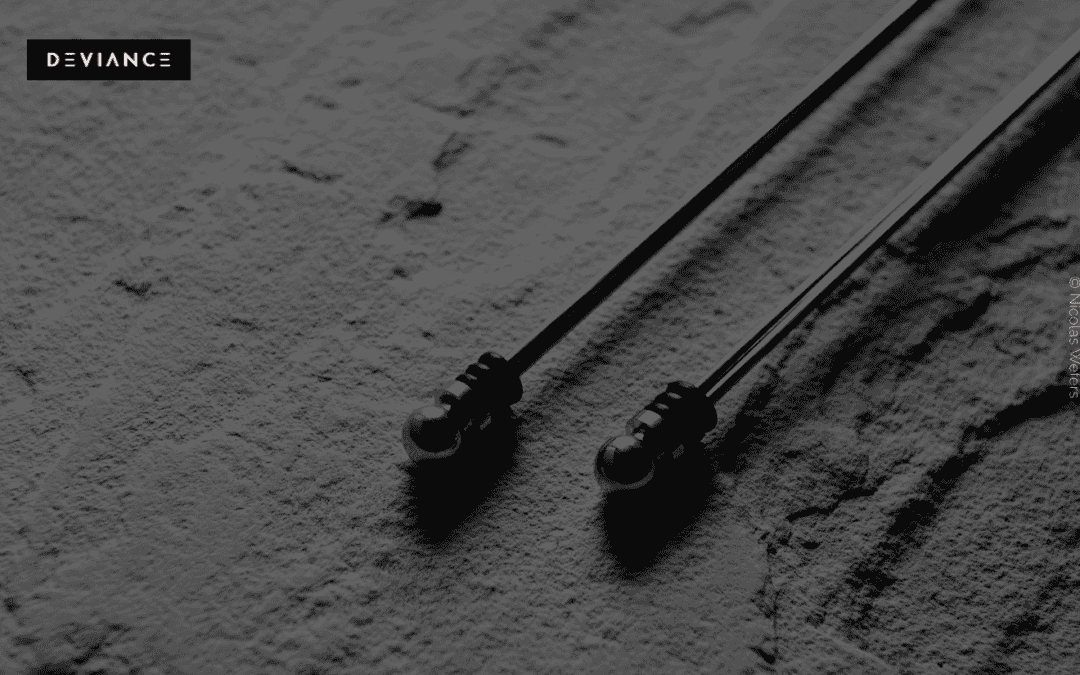What is a ruined orgasm?
A ruined orgasm is best known as the practice of stimulating a person with a penis to the point of no return. However, this stimulation is immediately ended prematurely. The term “milking” is often used synonymously.
Ruining an orgasm is also possible for people with a vulva. Whether it’s a vulva or a penis, ruining an orgasm means that you allow the orgasm to take place, but the satisfaction doesn’t occur. The orgasm fades away without any effect.
This game is particularly popular in the BDSM world, where it falls into the realm of orgasm control. This involves dominating the Sub or Bottom during sex in a particularly nasty way.
Why do people try to ruin orgasms?
Arousal usually follows a rising curve, ultimately reaching the point where orgasm is achieved. People with penises experience ejaculation here. Then the excitement levels off again. This is a longer lasting stimulation on the verge of orgasm. This is then interrupted at the point at which orgasm is approaching.
As is so often the case, this is also about power and powerlessness. After a ruined climax, people with penises had ejaculation, but without that cathartic, liberating feeling. Even in people with vulvas, the head feels like it hasn’t come yet and longs for an orgasm.
A ruined orgasm is completely unsatisfactory because the pleasure remains. This offers space for lots of games and exhilarating pleasures. The whole thing can be increased if the stimulation starts again after a short break.
Ruined orgasm – what happens?
For all genders, the stimulation should end at the point of no return. This can be done through pausing, pain in pleasure or distraction. If stimulation occurs with a toy such as a dildo or vibrator, it is simply removed. The feeling of pleasure stops, the physical climax comes – but the orgasm doesn’t happen.
For people with a penis, during ruin experiences, clear, sweet nectar (precum) often flows or drips out. Depending on previous chastity and arousal, it can also shoot out semen during the first ruin. However, no satisfaction occurs, leading to an indescribably intense yet depressingly unfulfilled feeling. The person remains on the edge of orgasm, feeling the urge to “come” again. The same applies to people with a vulva; the muscles tense up without any stimulation, and the clitoris lacks engagement. The impulse is taken away, leaving desire feeling empty.
What should I pay attention to with ruined orgasms?
Playing with orgasm control and ruined orgasms should be enjoyed with caution! The intense longing for redemption pushes some people beyond their personal willingness to suffer and beyond their limits. For many people, the desire and longing for recognition and connection to the dominant person increases enormously.
As a Top or Dom, it is therefore incredibly important to know the limits of your partner in this context. These must be taken into account to ensure mutual agreement and avoid a drop.
How do you ruin an orgasm…
…for people with penises?
For individuals with a penis, the penis is repeatedly brought to the “point of no return” without reaching the relieving orgasm. Initially, this requires some practice. The person signals their partner when the “point of no return” is approaching. The partner immediately stops stimulating the penis and ideally removes their hands completely. Incorporating pleasure pain can also be effective to interrupt sexual stimulation.
With a little training and practice, the dominant person can easily recognize this point in time. You can usually recognize the impending orgasm by the hardness of the penis, the shine of the glans or the size of the urethral opening. Sperm does come out, but without relief. Because there is no stimulation for the releasing climax, a feeling of pleasure torture develops. The penis is violently swollen, twitches and throbs and has a lot of blood supply. Often the glans or even the scrotum and spermatic cords can begin to hurt.
…for people with vulvas?
The principle is similar for people with vulvas/vaginas. However, it is a little more difficult to recognize the signs here. One possible sign is that the cervix begins to pulsate. With a finger on the cervix it is possible to detect orgasm. However, this is not possible for everyone. You can also look out for muscle twitching on the perineum. The vaginal muscles also begin to tense. These are relatively safe indicators of an impending orgasm.
Ways to make the orgasm come to nothing in a person with a vulva/clitoris are also pleasure pain or the targeted squeezing of the clitoral shaft. Vulvar blows make for a particularly nasty ruined orgasm.
Even people with vulvas are left unsatisfied afterwards. They also report pain, widespread in the labia and vulva. The labia become very swollen, the person is very wet and aroused, hypersensitive to further touch and stimulation. But not satisfied and still “horny”.
Which practices are similar?
In chastity the ruined orgasm is used. So the pressure is taken away by chastity, but then the penis is closed again and the pleasure remains. In this context one sometimes speaks of “Carezza” or “Karezza”. In the latter case – to put it simply – it is about maintaining the plateau phase.
When milking, edging, or ruining an orgasm, the partner ideally takes control of the pleasure. He or she decides whether and when the releasing orgasm takes place. Therefore, all of these types of games, as well as the ruined orgasm, fall into the large category of orgasm control.
Ruined orgasm – how can it be made even more intense?
- Increasing chastity is prescribed before the ruination session.
- Stimulation to a violent, painful, dry orgasm after one to three hours.
- Extension of the ruined orgasm by a subsequent ban on orgasm for several days.
Prostate massage instead of penis stimulation: Ruined orgasms due to stimulation of the prostate can bring variety into play.
Another play in this context is, as already mentioned, tease and denial. This can be a very extreme form of play.
- Clearly announce the orgasm verbally, let the Sub beg and then refuse by missing the physical component.









